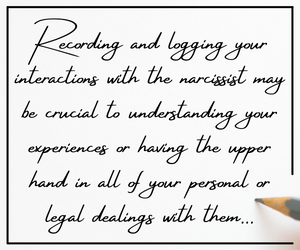Passive aggression
Narcissists often show signs of passive aggressive behaviors before they explode into an aggressive and violent rage.
Or they may never have a violent outburst, but the simmering rage still exists,
and is covertly hidden through passive aggression.
It is often used as an avoidance to direct confrontation.
And yet, it still meets and supports the narcissist’s agenda to punish their victims.
This can be in the form of ghosting or using the silent treatment.
To deliberately not be physically and emotionally available in the victim’s times of need.

Withholding affection and attention is a narcissist’s way of expressing that they are angry with you.
Or they may passively use gaslighting as a form of punishment.
They get pure enjoyment from watching their victims feel uncomfortable, hurt and confused.
They also directly insult others through hurtful comments disguised as jokes.
Passive aggressive techniques are often used as punishment to bring down their victims,
when the narcissist gets an injury to their extremely sensitive ego.
And they use it to take their fears and insecurities out onto others to make themselves feel superior and in control.
Reactive abuse, blame shifting and playing the victim are also types of passive aggression behaviors that the narcissist often uses.
Passive aggression is indirect, and narcissists like that fact.
Because it allows them to hide and deny their true intentions.
Thus, avoiding accountability for their wicked ways, whilst also hiding and denying their inferiority to others.
How it affects the victims
When we experience narcissistic rage, we can feel many different emotions.
We may make excuses for the narcissist’s behavior, believing that they are just going through a hard time in life.
Or often, we tend to feel like a parent to the narcissist, trying to reason with them in an attempt to control their tantrums.
And in many situations, we can fear the narcissist’s unpredictable and explosive outbursts.

Depending on the level of rage we experience from the narcissist,
it can leave us fearing being in their presence.
Thus, being too scared to communicate or reason with the narcissist.
It leaves us feeling like we are constantly walking on eggshells.
And avoiding saying anything that could potentially upset the narcissist and trigger another rage episode.
Experiencing narcissistic rage can be terrifying and traumatic to those involved.
The victim can be paralyzed with tremendous fear, where they are too scared to leave the relationship.
Especially if there are threats involved.
The fear of walking on egg shells can sometimes feel less stressful than the fear of leaving the relationship.
This fear, along with the trauma bonding can leave us feeling stuck,
causing us to remain in the toxic relationship for years or even decades;
appeasing and further enabling the narcissist just to avoid the consequences of a narcissistic rage.
It can leave us in a permanent state of anxiety and increased alertness,
causing us to live in the fight or flight response mode.

Most of us choose to live in a place of love and light.
And we mistakenly believe that our love will fix the narcissist.
But the narcissist chooses to live in a place of darkness,
and they intentionally want to dim our light, abuse our love and force us to live in their darkness under their control.
We must know and believe that our love deserves to be appreciated and reciprocated.
And a narcissist will never be able to do that.
Therefore, they do not deserve our time, love, respect, trust or efforts.








